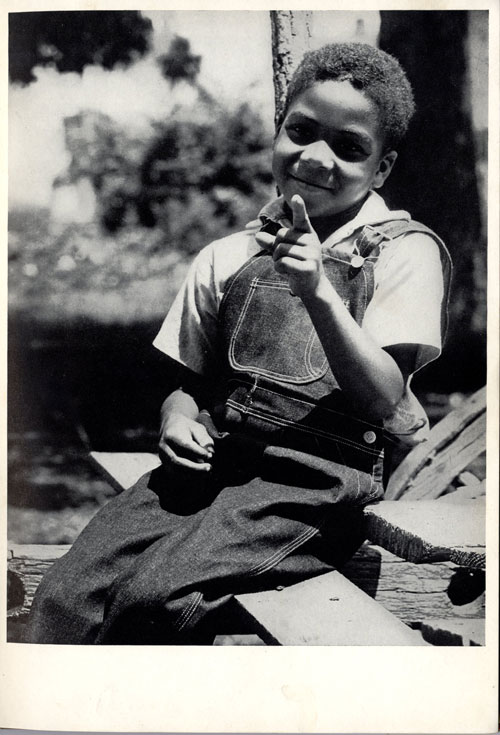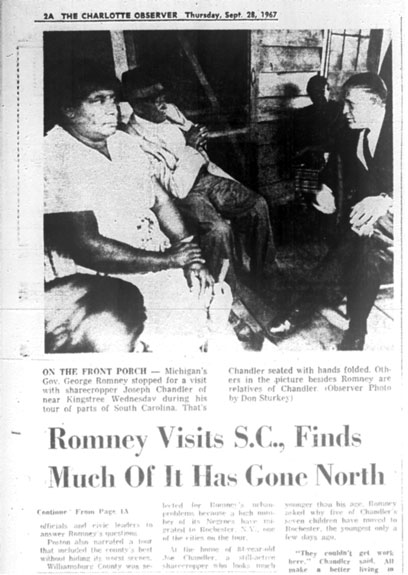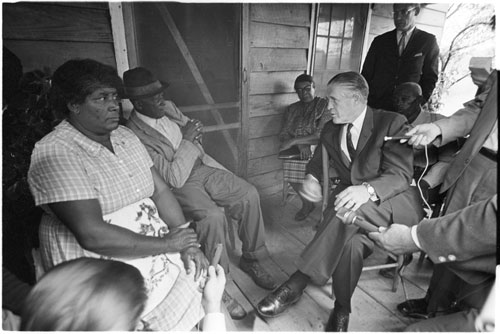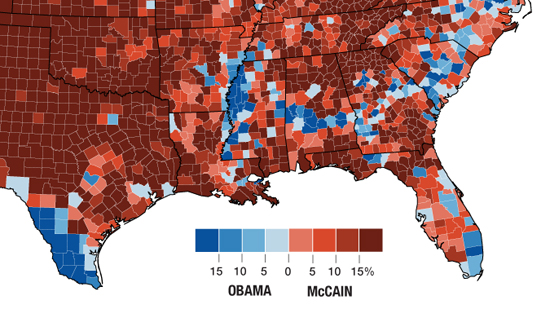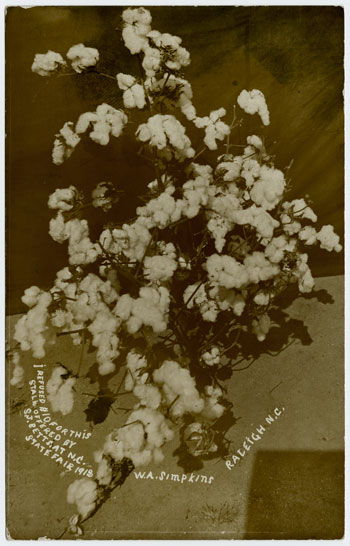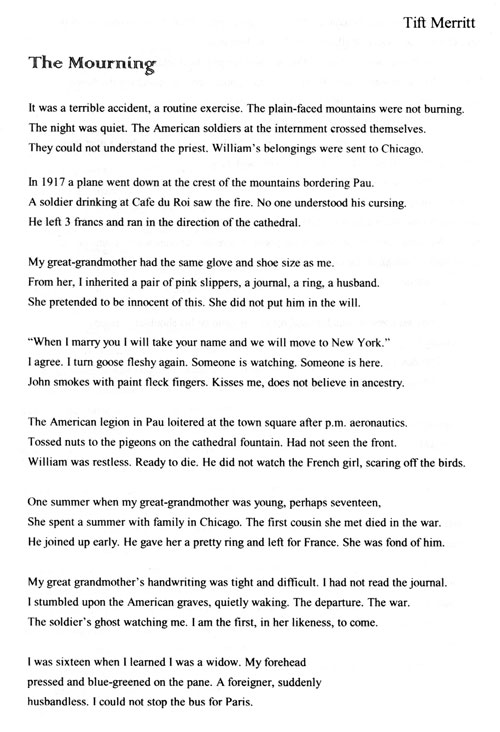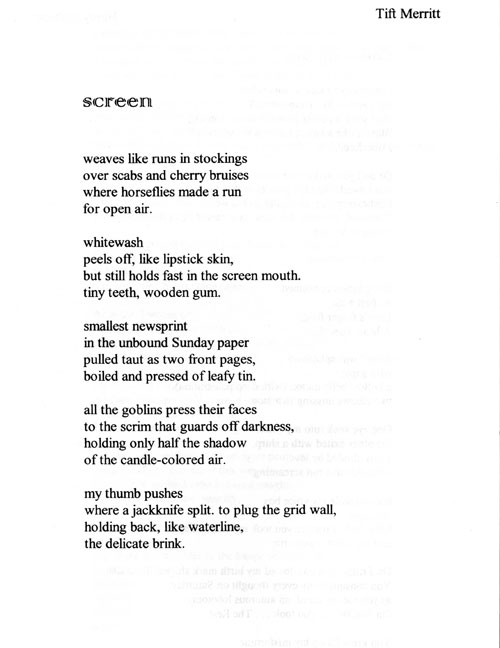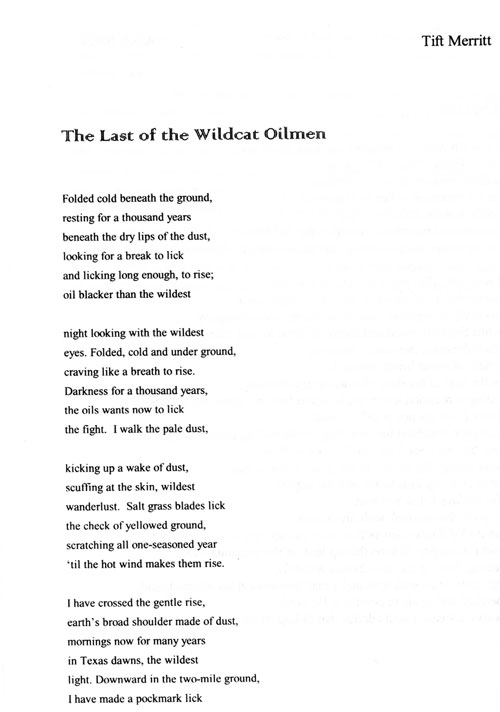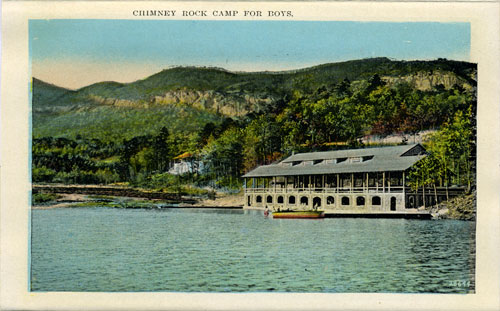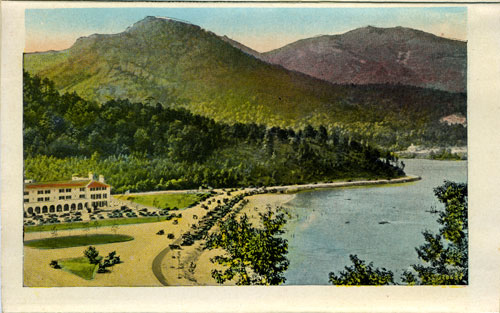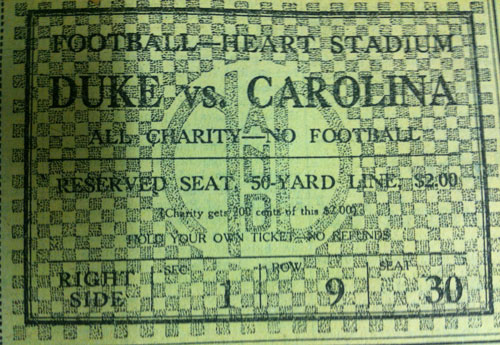
Here’s a story you’re not likely to hear as the announcers rattle on during Saturday’s UNC-Duke football game. Among the schools’ past 98 meetings on the gridiron, there have been only two games that ended with both teams scoreless – in 1930 and in 1931.
Fans’ (or at least two reporters’) displeasure with the 0-0 finish to the 1930 game resulted in the playing of a second game. But no players turned out. The game was a radio drama of sorts–a 30-minute broadcast aired on WPTF 2 1/2 weeks after the real game was played. The play-by-play was provided by H.K. Carpenter, the radio station’s manager.
The first UNC-Duke meeting in 1930 happened at Kenan Stadium in Chapel Hill on December 6. Rain had fallen the previous evening and about an hour before kickoff a downpour erupted. In a column in the News and Observer the following day, Carl Goerch, later the publisher of The State magazine, described the day:
Eighteen thousand or more darned fools from all over North Carolina drove varied distances to Chapel Hill todqy in order that they might get their feet and other parts of their anatomy wet while watching a couple of score young men wallow around in the mud in what purported to be a football game. Despite the fact that Duke players presented a much muddier appearance than did Carolina, the score was 0-0. Whereupon the same eighteen thousand or more darned fools went back to their respective home to to tell their respective relatives and friends what a glorious time they had.
Anthony J. McKevlin, sports editor for the News and Observer, wrote that players “turned into mobile mud-casts of humans as they sloshed, slushed, slid, skidded, dove, swam, and whatnot through a layout which made this usually beautiful plant look like Kenan Memorial Swimming Pool.” Duke came the closest to scoring, at one point moving the ball to Carolina’s 2-yard line. But even without crossing the goal line, Duke, in a sense, ended the game victorious. The Blue Devil’s claimed the title of Big Five champions, having won two games and tied two others in matchups with in-state rivals (UNC, Davidson, Wake Forest and N.C. State). UNC and Wake Forest tied for second in the Big Five, with records of 2 wins and 1 loss.
The tie score fueled calls the following day for a rematch between the two teams, with proceeds from ticket sales directed to aid the state’s growing population of unemployed. Proponents of the idea suggested the second game take place the following Saturday or on New Year’s Day. Athletic officials from both schools met and rejected a second game, pointing out that Southern Conference rules prohibited post-season games. Additionally, “the University of North Carolina faculty is committed by a faculty resolution against post-season games and that the sentiment here is that for academic reasons there should be no game after Thanksgiving,” according to an account in the December 9 News and Observer. Exams were slated to begin at UNC on December 18 and “the players and students generally are all set for intensive concentration on their work during the closing days of the fall quarter.” The paper added that President Frank Porter Graham “took full responsibility” for the school’s decision and that the President’s office reported “but few telegrams and telephone calls endorsing the proposed game.”
With university officials’ refusal to hold a second Duke-UNC game, McKevlin and Goerch used the pages of the News and Observer to promote a fantasy matchup–the “Duke-Carolina Charity Football Game–ALL CHARITY and No Football.” Fans were encouraged to send $2 to the News and Observer to attend the December 23rd game, which was scheduled for broadcast on Raleigh’s WPTF Radio. In exchange for their $2 contribution, fans were sent a souvenir ticket (see the image above). Proceeds from ticket sales were turned over to Annie Kizer Bost, the head of the State Board of Charities and Public Welfare. Bost, in turn, directed the money to the Salvation Army or another charitable organization in the home county of the ticket buyer.
Goerch and McKevlin wrote playful pieces promoting the fantasy game, describing team workouts and listing ticket buyers. On the first day of ticket sales, buyers included Josephus Daniels, Frank Daniels and Governor O. Max Gardner. Goerch, a resident of Washington, N.C., sought to stir up interest in the eastern part of the state. “I was over in Greenville yesterday and thought maybe I’d hear some talk about the sale of tickets over there,” he wrote. “But it seems that the folks in Pitt County had other things to think about. Two of their banks busted right square in their faces. That seems to eliminate Greenville as a competitor of Washington in the sale of tickets.”
On game day Goerch continued to gin up ticket sales, issuing a call for North Carolina Baptists, of which he counted himself a member, to send in their $2. Episcopal, Presbyterian and Methodist ministers had contributed to the appeal, he wrote. “I’m still hoping that at least one Baptist will come to the front before the sale of tickets is called off. Any kind of Baptist will do, Missionary, Primitive or Free Will.”
At 6:15 pm on December 23, H.K. Carpenter took to the airwaves, reading a script prepared by McKevlin and Stanley Wohl, a Greensboro resident, football fanatic and one-time member of the North Carolina Securities Commission.
“They’re rushing the start,” Carpenter said. “Captain Nash of Carolina won the toss and chose to receive. Captain Davis of Duke selects the west goal for defending. The Tar Heels are out in orange jerseys, and Duke has the usual white garb. They’re lining up. Kid Brewer with kick off for Duke. There goes the kick-off–it’s deliberately short and travels only to Carolina’s 45…”
And so it went for the next 1/2 hour. At game’s end the score was again tied. This time both teams had made it on the board. The 33-33 finish seemed to leave most everyone happy. Although a final tally of ticket sales does not appear in the News and Observer, on game day McKevlin and Goerch’s efforts had yielded $646 for charity.

